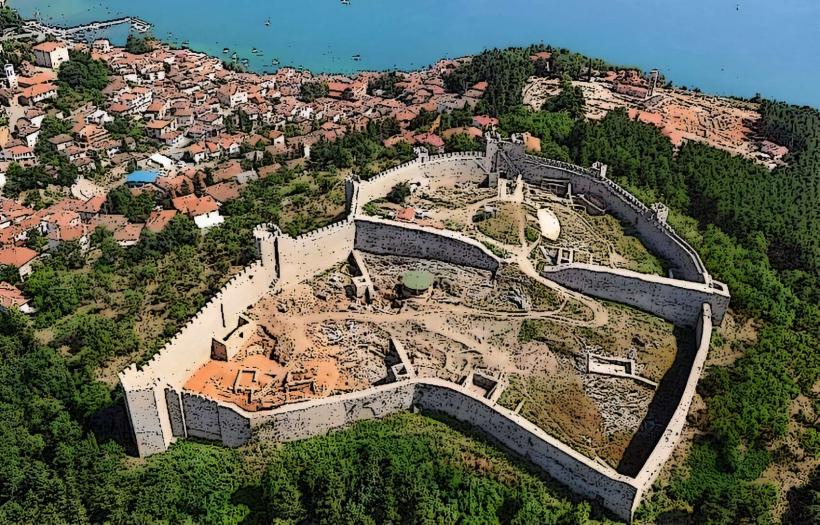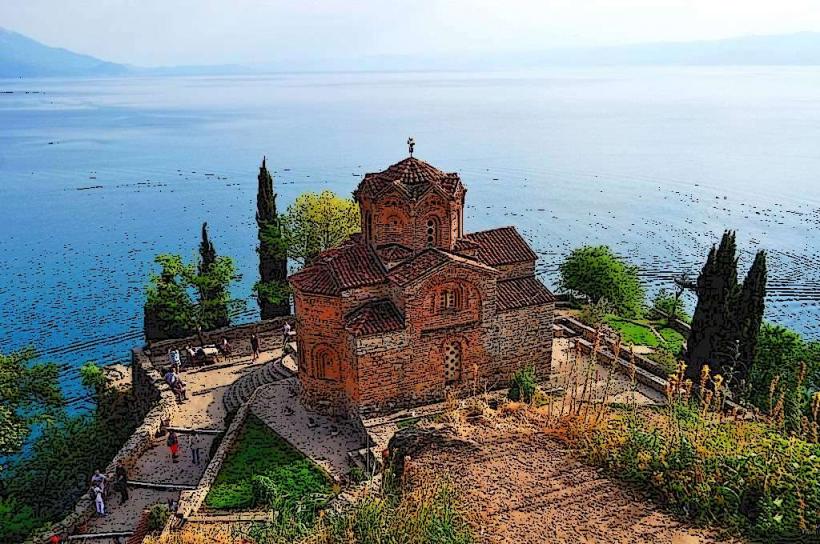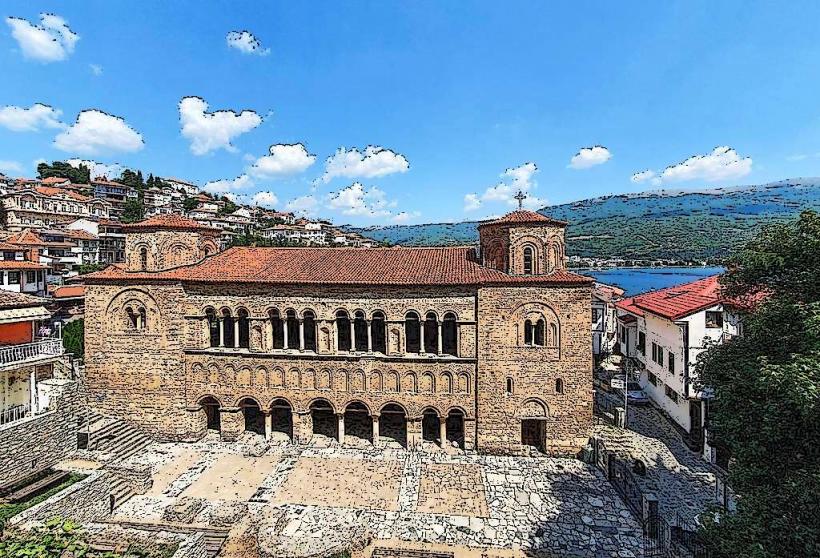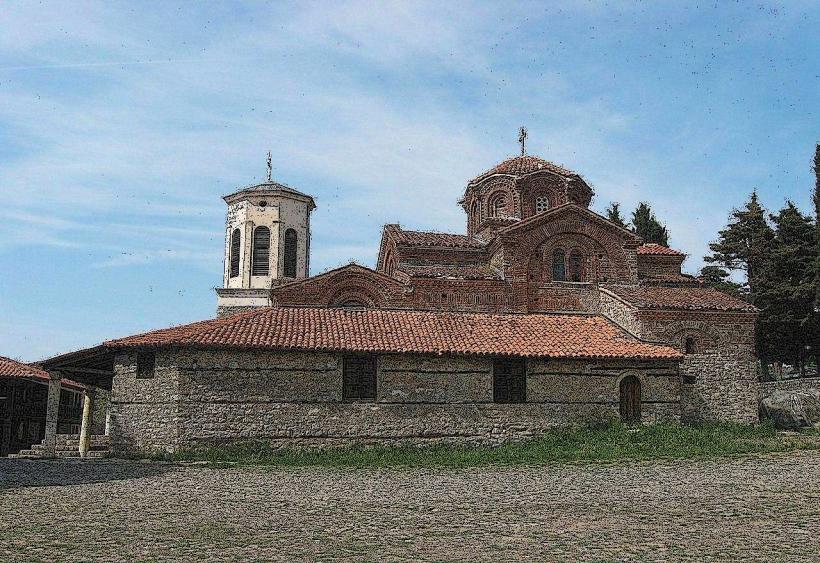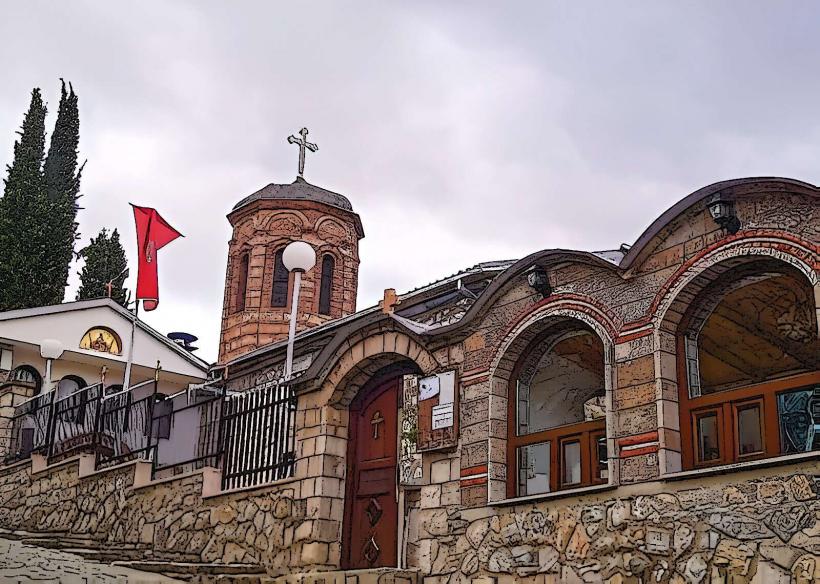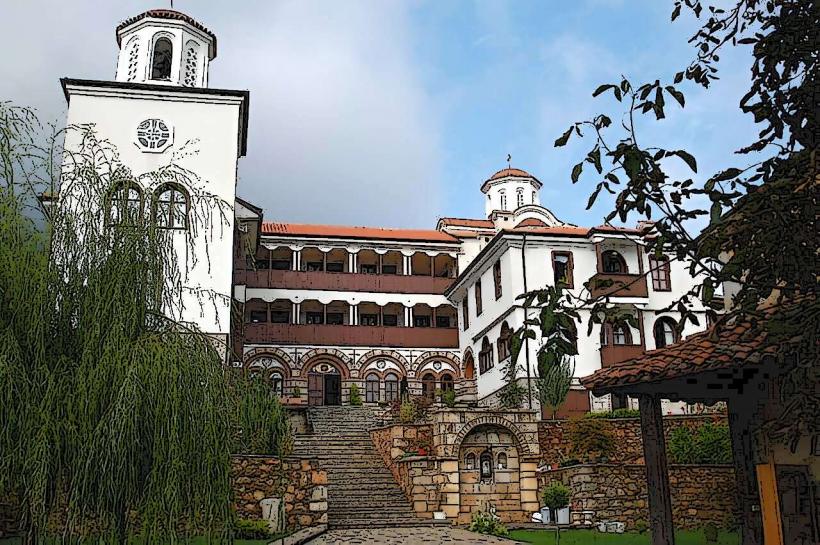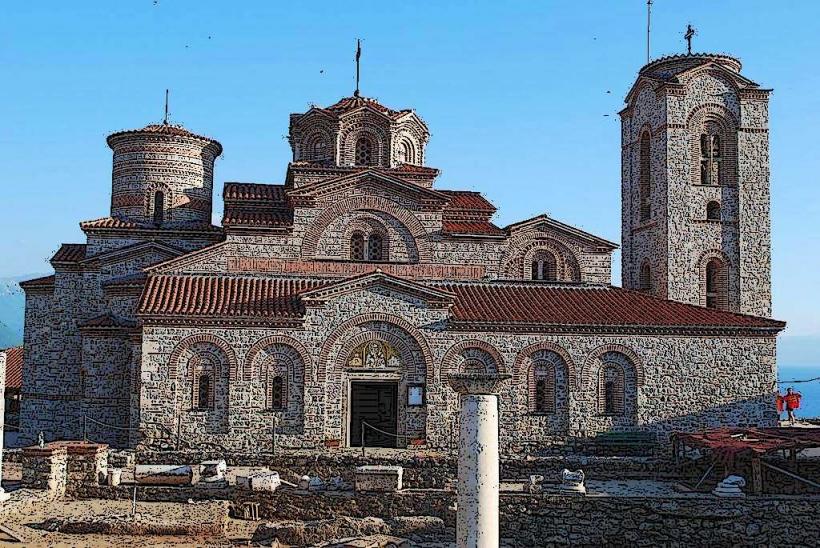Information
Landmark: Monastery of St. NaumCity: Ohrid
Country: North Macedonia
Continent: Europe
The Monastery of St. Naum is one of the most significant and revered religious sites in North Macedonia, located on the southern shore of Lake Ohrid. The monastery is dedicated to Saint Naum, a 9th-century Christian missionary and one of the Byzantine brothers responsible for the Christianization of the Slavic peoples in the Balkans. It is not only a religious site but also a major cultural and historical landmark, known for its spiritual significance, architectural beauty, and breathtaking surroundings.
Overview
- Location: The Monastery of St. Naum is situated about 30 kilometers south of the city of Ohrid, near the village of Trpejca. It lies on the edge of Lake Ohrid, offering stunning views of the lake and the surrounding mountains. The serene and picturesque setting makes it a popular pilgrimage site and tourist attraction.
- Established: The monastery was founded in the 10th century, around the time that Saint Naum was active in spreading Christianity and establishing the Slavic Orthodox Church in the region.
History and Religious Significance
Saint Naum:
- Saint Naum (also known as Naum of Ohrid) was a key figure in the Christianization of the Slavic peoples in the Balkans during the 9th century. He was a disciple of Saint Cyril and Saint Methodius, who are famous for creating the Glagolitic alphabet and translating the Bible into the Slavic languages.
- Naum played a central role in the development of Christianity in the region and the establishment of the First Bulgarian Empire's Orthodox Church. His work in Ohrid and its surrounding areas, including the founding of churches and monasteries, was crucial to the spread of Christianity.
- He is believed to have performed many miracles, and his sanctity made the monastery a place of worship and pilgrimage.
Monastery Foundation:
- The Monastery of St. Naum was founded by Saint Naum himself, though the exact date of its establishment is unclear. Some sources suggest it was built in the early 10th century. It was likely constructed to serve as a place for prayer, study, and the dissemination of Christian teachings among the Slavic people.
- Saint Naum is buried in the monastery, and it is believed that his grave has miraculous powers, attracting pilgrims who seek healing or blessings. A small chapel within the monastery contains his tomb, which remains a focal point for religious devotion.
Role in the Byzantine Empire:
- During the Byzantine period, the Monastery of St. Naum became an important religious center, as it was closely connected to the Ohrid Archbishopric. The monastery played a crucial role in the Orthodox Christianization of the Slavic populations in the region, serving as a place of education, spiritual guidance, and religious observance.
Architecture and Features
Monastery Complex:
- The Monastery of St. Naum complex is a beautiful example of Byzantine architecture. The main church is constructed in a cross-in-square plan with a large central dome, characteristic of medieval Orthodox monasteries.
- The walls of the monastery are decorated with frescoes, some of which are from the 11th century, showcasing a mixture of Byzantine and Slavic Orthodox artistic styles. These frescoes depict biblical scenes, saints, and religious figures, including several scenes featuring Saint Naum.
- The church is a relatively small building, but its spiritual significance and historical value make it an important religious site.
Tomb of Saint Naum:
- One of the most important features of the monastery is the tomb of Saint Naum, which is housed in a small chapel near the church. Pilgrims often visit the tomb to pay their respects and seek blessings, as it is believed that the saint's grave has miraculous powers. The tomb has a circular stone structure and is surrounded by iconography of Saint Naum, adding to its sacred nature.
Monastic Cells:
- The monastery complex also includes a series of monastic cells where monks once lived and prayed. These cells are simple, stone-built structures designed for the ascetic lifestyle of the monastic community.
Bell Tower:
- The bell tower of the monastery stands tall and is a notable feature of the complex. It is visible from the surrounding area and serves as a reminder of the monastery’s historical importance.
Lake Ohrid Views:
- The monastery’s location on the shores of Lake Ohrid offers breathtaking views of the surrounding area. The tranquil waters of the lake, combined with the natural beauty of the Albanian mountains to the west, create a serene and spiritual environment for visitors and pilgrims alike.
Modern-Day Role and Visitor Experience
Pilgrimage Site:
- The Monastery of St. Naum is a major pilgrimage destination for Orthodox Christians, particularly those in Macedonia, Bulgaria, and Serbia, who venerate Saint Naum. Pilgrims visit the monastery to pray for healing and divine intervention, particularly at the tomb of Saint Naum.
- The miraculous powers attributed to the saint's grave and the peaceful setting contribute to the monastery's spiritual importance.
Tourist Attraction:
- The monastery is also a popular tourist destination, attracting visitors who are interested in history, architecture, and the natural beauty of the area. The stunning views of Lake Ohrid and the surrounding landscape make the monastery a peaceful place for reflection and relaxation.
- Tourists can explore the monastery complex, visit the tomb of Saint Naum, and enjoy the frescoes and church architecture. Nearby, visitors can also take a boat tour on Lake Ohrid, which is known for its crystal-clear waters and diverse ecosystems.
Cultural and Religious Events:
- The monastery hosts several religious services and festivals throughout the year, especially on the feast days of Saint Naum (May 23) and other Orthodox Christian celebrations.
- The monastery also plays an important role in the preservation of Orthodox traditions, hosting a small community of monks who continue the spiritual practices established by Saint Naum.
Conclusion
The Monastery of St. Naum is a significant historical, religious, and cultural landmark on the shores of Lake Ohrid. Its association with Saint Naum, a key figure in the Christianization of the Slavic peoples, its stunning Byzantine architecture, and its serene setting make it a must-visit site for those interested in religious history and Orthodox Christianity. Today, the monastery continues to serve as a place of pilgrimage, spiritual reflection, and tourist interest, offering a glimpse into the rich cultural heritage of North Macedonia and the Balkans.


